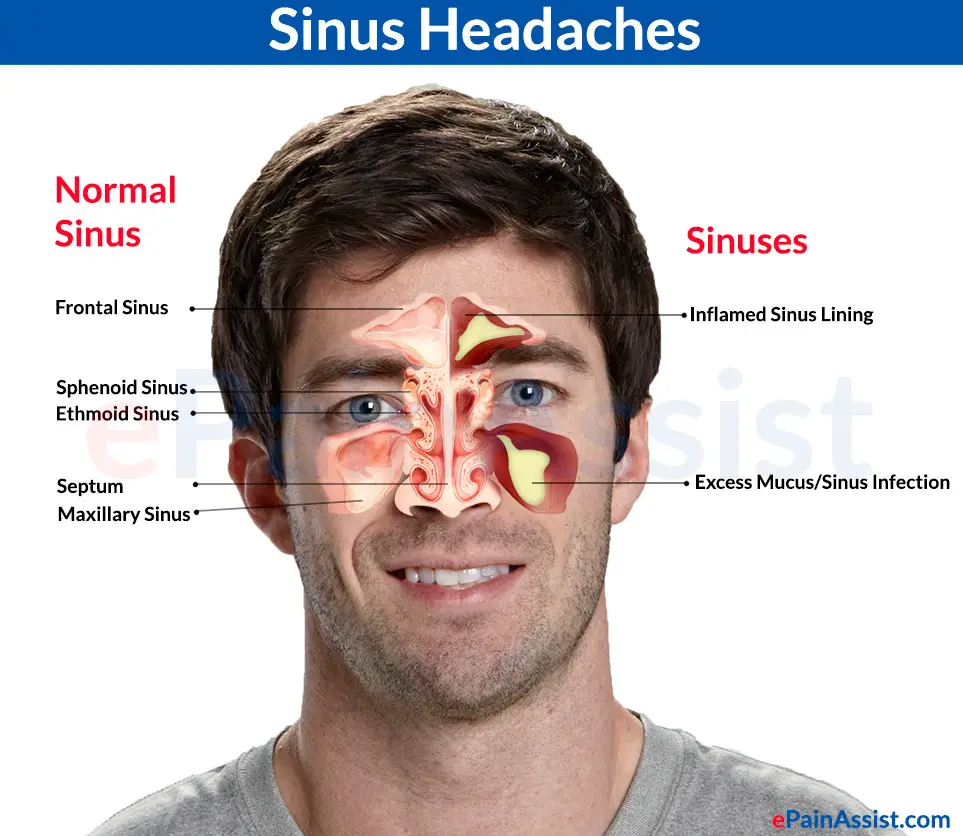Sinus headaches can be quite debilitating and frustrating, especially when they persist despite attempts at relief. These headaches are often associated with sinusitis, which is the inflammation or infection of the sinuses. In order to understand why sinus headaches may not go away, it is important to explore the underlying causes and possible treatment options.
Sinusitis is typically caused by a viral infection, but can also be triggered by allergies or bacterial infections. The inflammation in the sinuses can lead to a buildup of mucus, causing pressure and pain in the forehead, cheeks, and around the eyes. When this inflammation does not resolve, it can result in chronic sinusitis and persistent headaches.
One reason why sinus headaches may not go away is due to improper treatment. Over-the-counter pain relievers may provide temporary relief, but they do not address the underlying cause of the inflammation. In cases of bacterial sinusitis, antibiotics may be necessary to clear the infection and alleviate symptoms. However, if the sinusitis is caused by allergies, antihistamines or corticosteroids may be more effective in reducing inflammation.
Another possibility is sinus headaches being triggered by environmental factors. Irritants such as smoke, pollution, or strong odors can aggravate the sinuses, leading to persistent headaches. Identifying and avoiding these triggers can help alleviate symptoms and prevent future episodes.
In some cases, sinus headaches may be a symptom of an underlying condition, such as a deviated septum or nasal polyps. These structural abnormalities can obstruct the sinuses and interfere with proper drainage, leading to chronic inflammation and headaches. Treating these conditions may require surgery or other interventions.
It is also important to consider lifestyle factors that could exacerbate sinus headaches. Poor hydration, excessive caffeine consumption, and stress can all contribute to persistent symptoms. Maintaining a healthy lifestyle, with adequate hydration, a balanced diet, and stress management techniques, may help reduce the frequency and intensity of sinus headaches.
In conclusion, persistent sinus headaches can be a result of ineffective treatment, environmental triggers, underlying conditions, or lifestyle factors. It is important to consult with a healthcare professional for a proper diagnosis and personalized treatment plan. By addressing the root causes and implementing appropriate interventions, individuals can find relief from their sinus headaches.
What does frontal sinusitis feel like?
Frontal sinusitisFrontal sinusitisThe frontal sinuses are one of the four pairs of paranasal sinuses that are situated behind the brow ridges. Sinuses are mucosa-lined airspaces within the bones of the face and skull.https://en.wikipedia.org › wiki › Frontal_sinusFrontal sinus – Wikipedia is a relatively common condition that affects 15% of the adult population. It presents as frontal headache, fever, tiredness and may be accompanied by tenderness over the medial part of the infraorbital margin.
What does a constant sinus headache mean?
Causes. Sinus headaches can be caused by sinus congestion and inflammation, called sinusitis. Sinusitis, in turn, is caused by either a respiratory infection, such as a cold or flu, or allergies, like hay fever. Healthy sinuses allow mucus to drain and air to circulate throughout the nasal passages.

How do you check frontal sinuses?
1) Frontal sinuses – use your thumbs to press up under the bony brow on each side of the nose. 2) Maxillary sinuses – press up under the zygomatic processes using your thumbs or index and middle fingers. Percussion: 1) Tap lightly directly over each sinus with your index finger.
How do you get rid of a sinus migraine?
– Apply a warm compress to painful areas of your face.
– Use a decongestant to reduce sinus swelling and allow mucus to drain.
– Try a saline nasal spray or drops to thin the mucus.
– Use a vaporizer or inhale steam from a pan of boiled water.
Should you go to the chiropractor or massage first?
In general, it’s best to get a back massage after your chiropractic care for minor stiffness and aches. Additionally, it’s better to have your massage before your chiropractic care when you have a lot of muscle tightness.
What can I do to avoid the chiropractor?
– Proper Posture at All Times. Use proper posture and you can help avoid curvature of the spine. …
– Work on Your Stance. Your stance is very important in keeping your spine in proper alignment. …
– Stretch Your Neck Regularly.

Is it OK to go to the chiropractor and then get a massage?
The truth is, it depends wholly on you. In general, it’s best to get a back massage after your chiropractic care for minor stiffness and aches. Additionally, it’s better to have your massage before your chiropractic care when you have a lot of muscle tightness.

What is better for you a massage or chiropractor?
Those who have specific concerns regarding joint alignment or chronic pain may benefit more from chiropractic care since it is designed for correcting spinal misalignment whereas massage therapy does not correct structural issues but rather reduces pain through loosening muscles and soft tissues.
What can I do instead of going to a chiropractor?
– The Ancient Chiropractor Alternative: Massage. …
– Yoga As an Alternative Form of Massage. …
– Osteopathy Compared to Yoga Massage. …
– Stretching Therapy: The Perfect Chiropractor Alternative.

